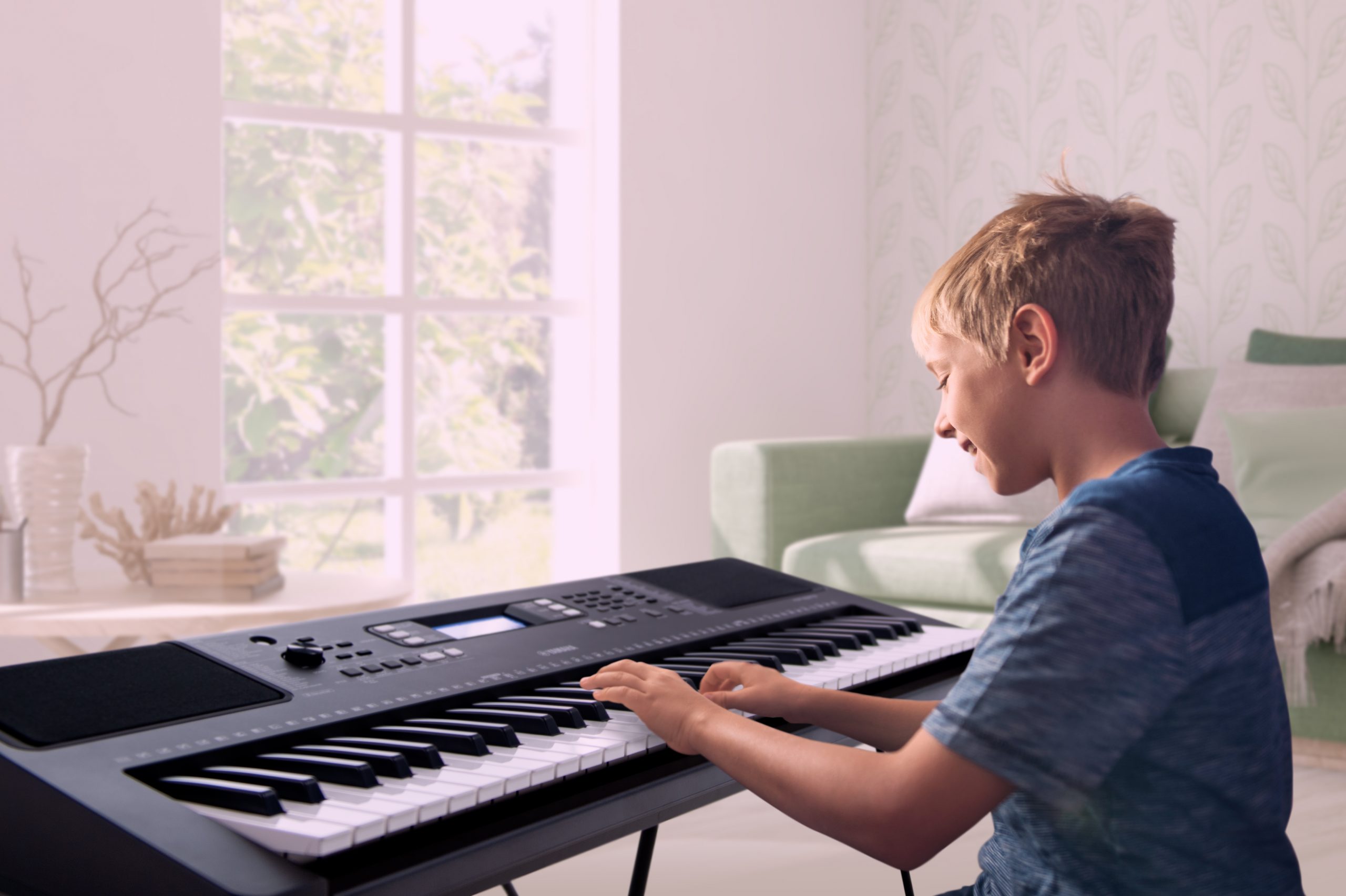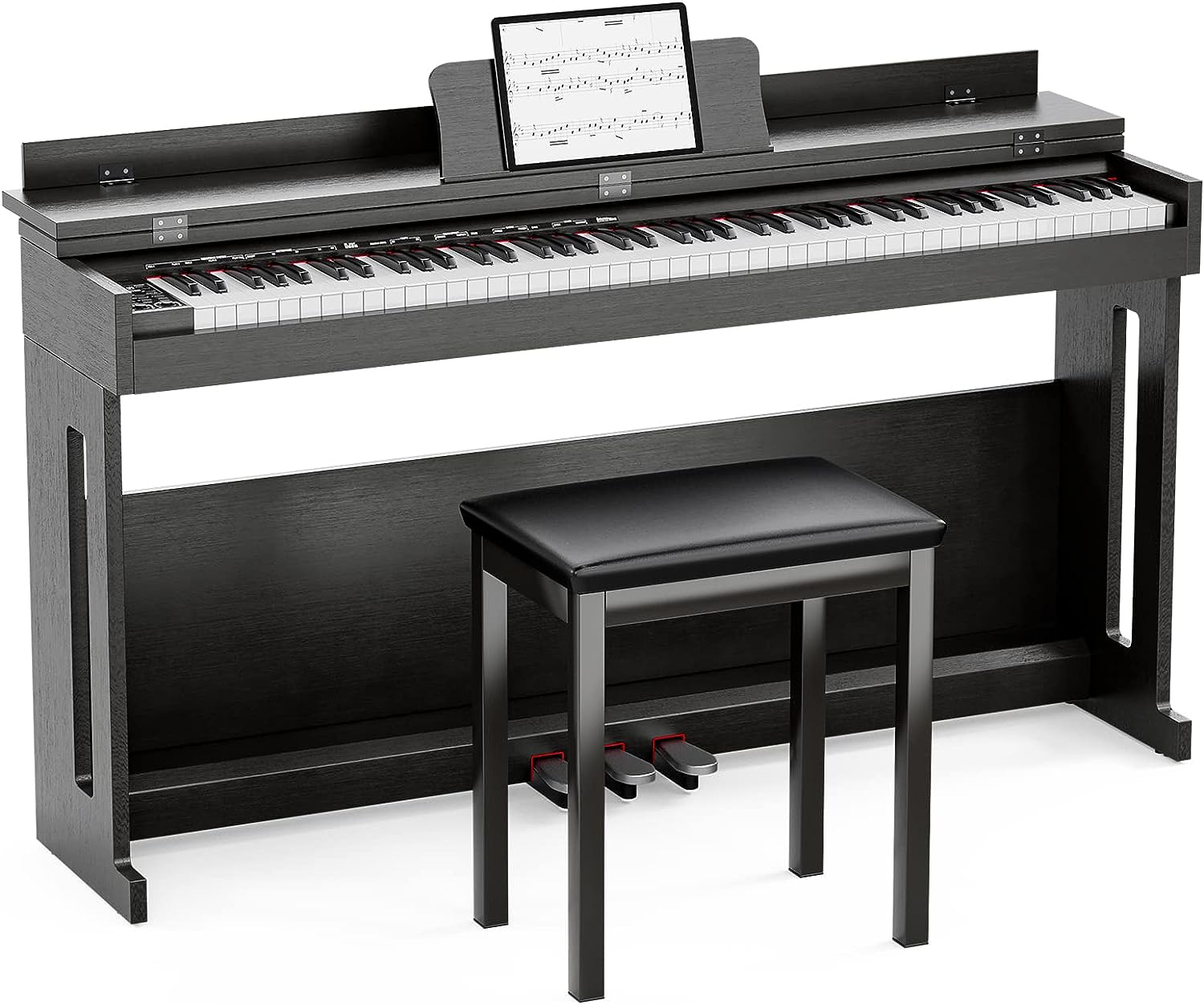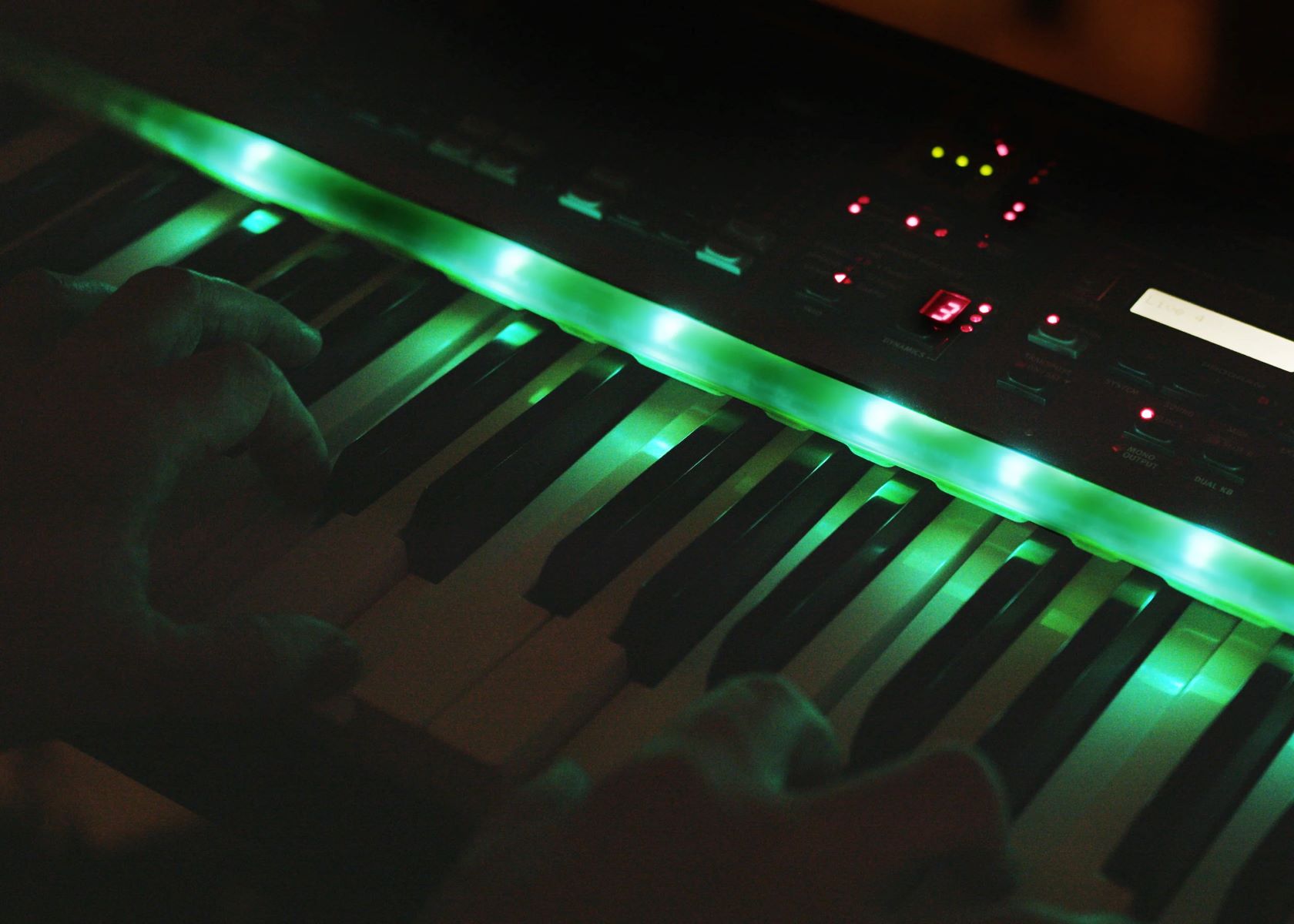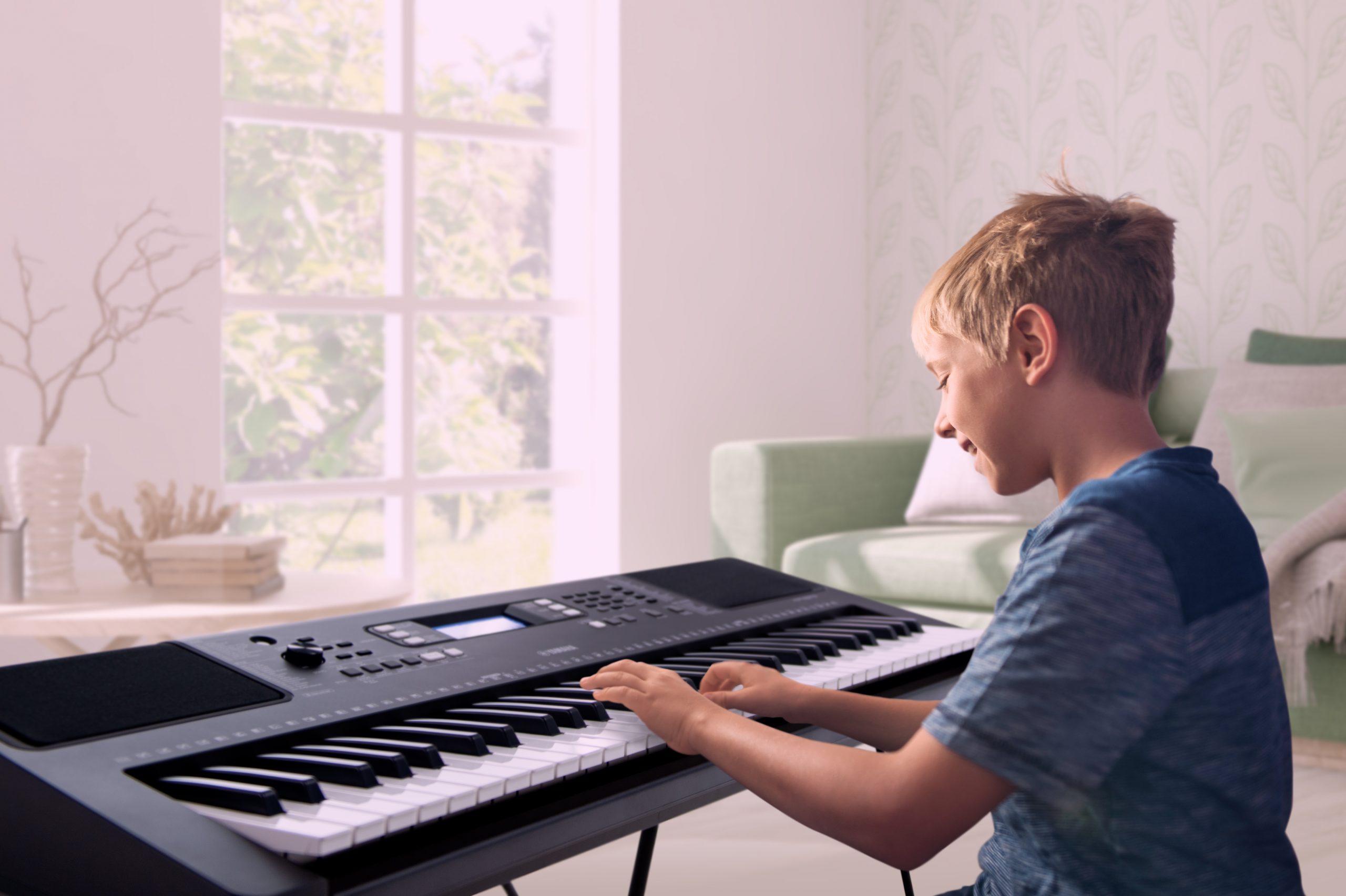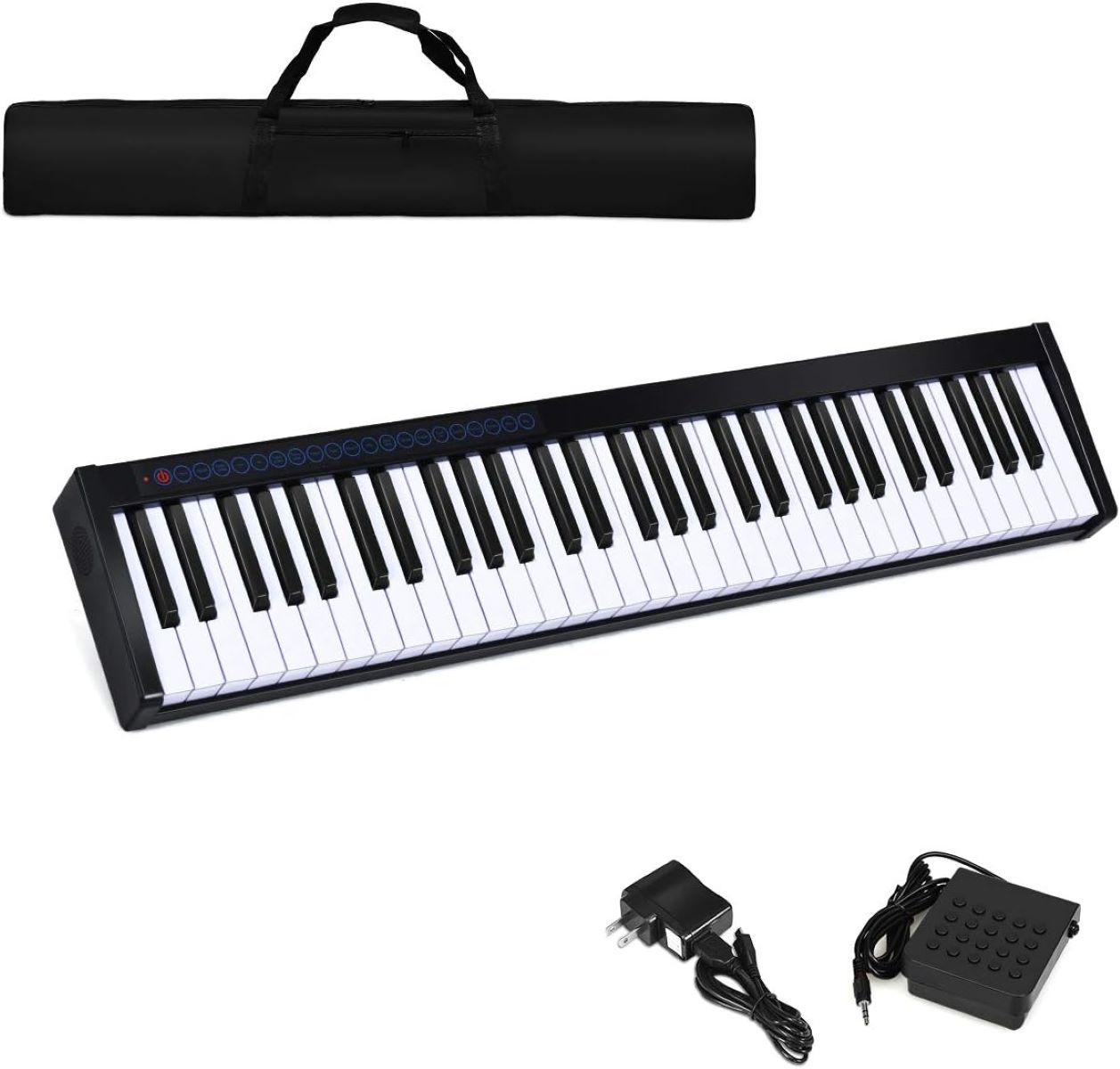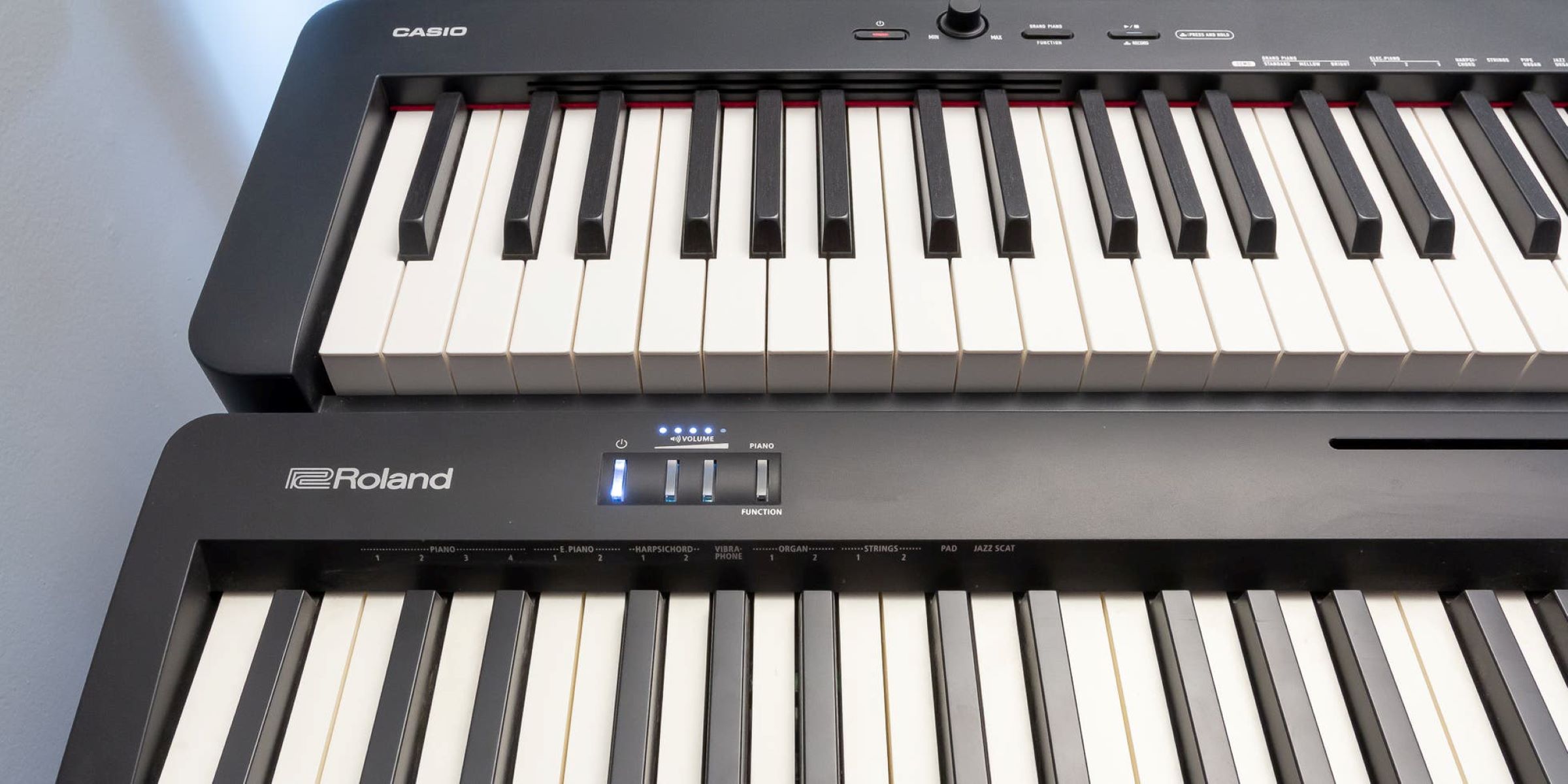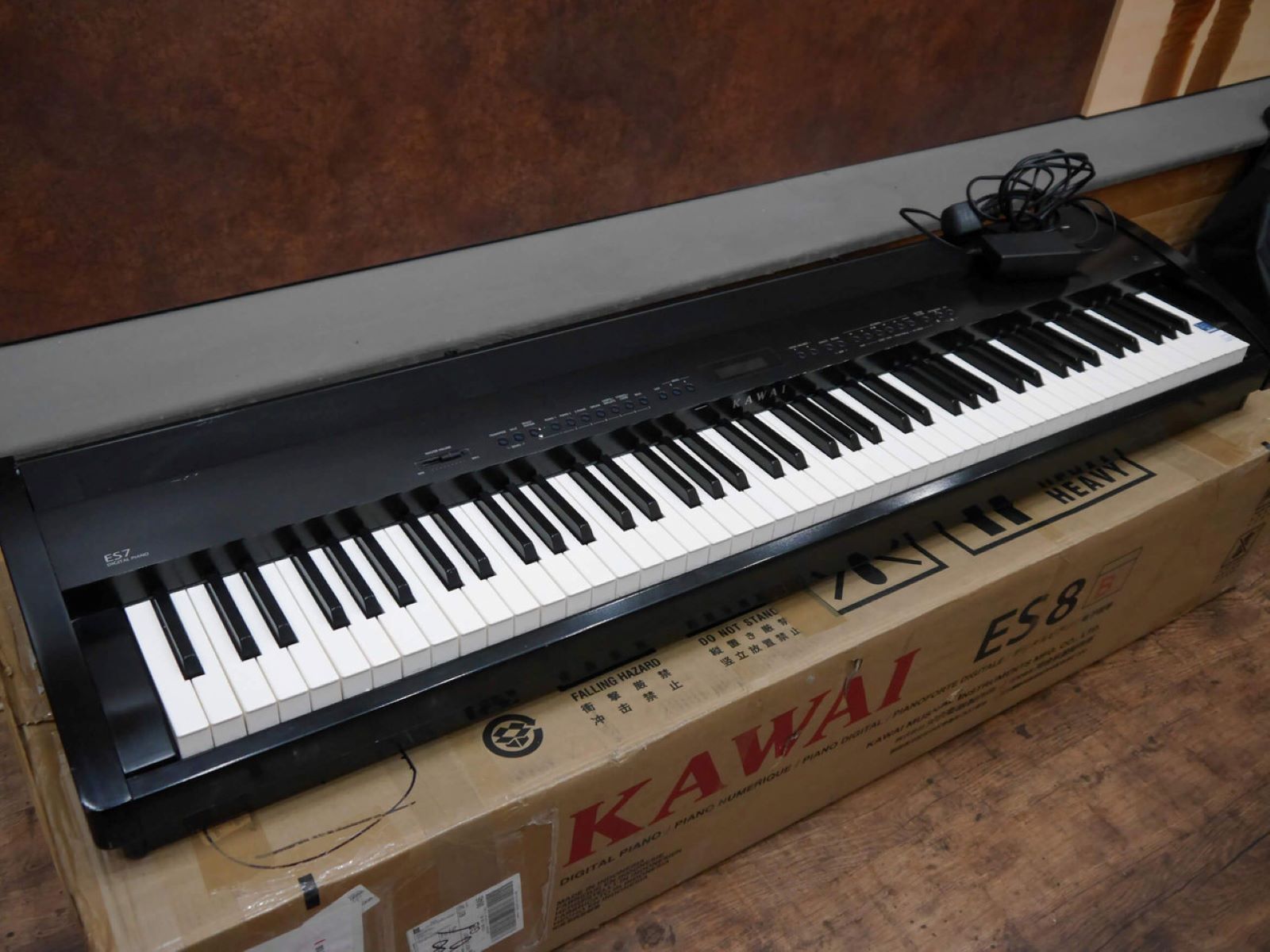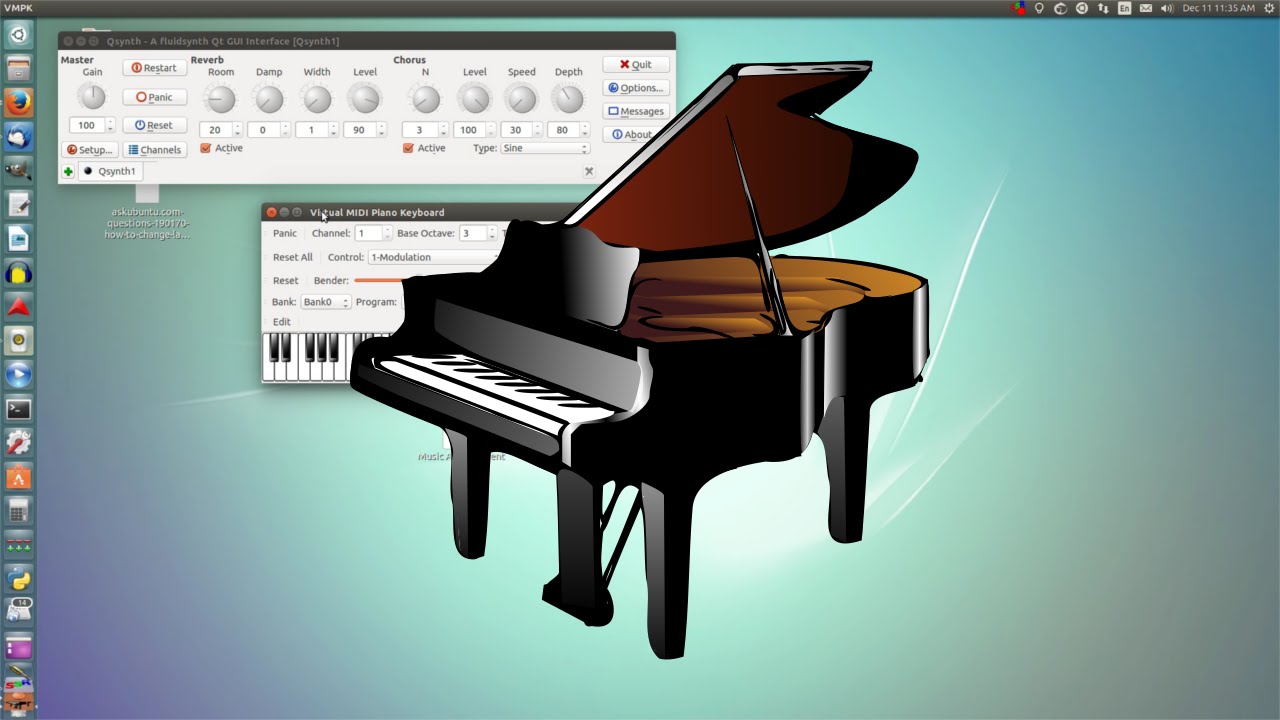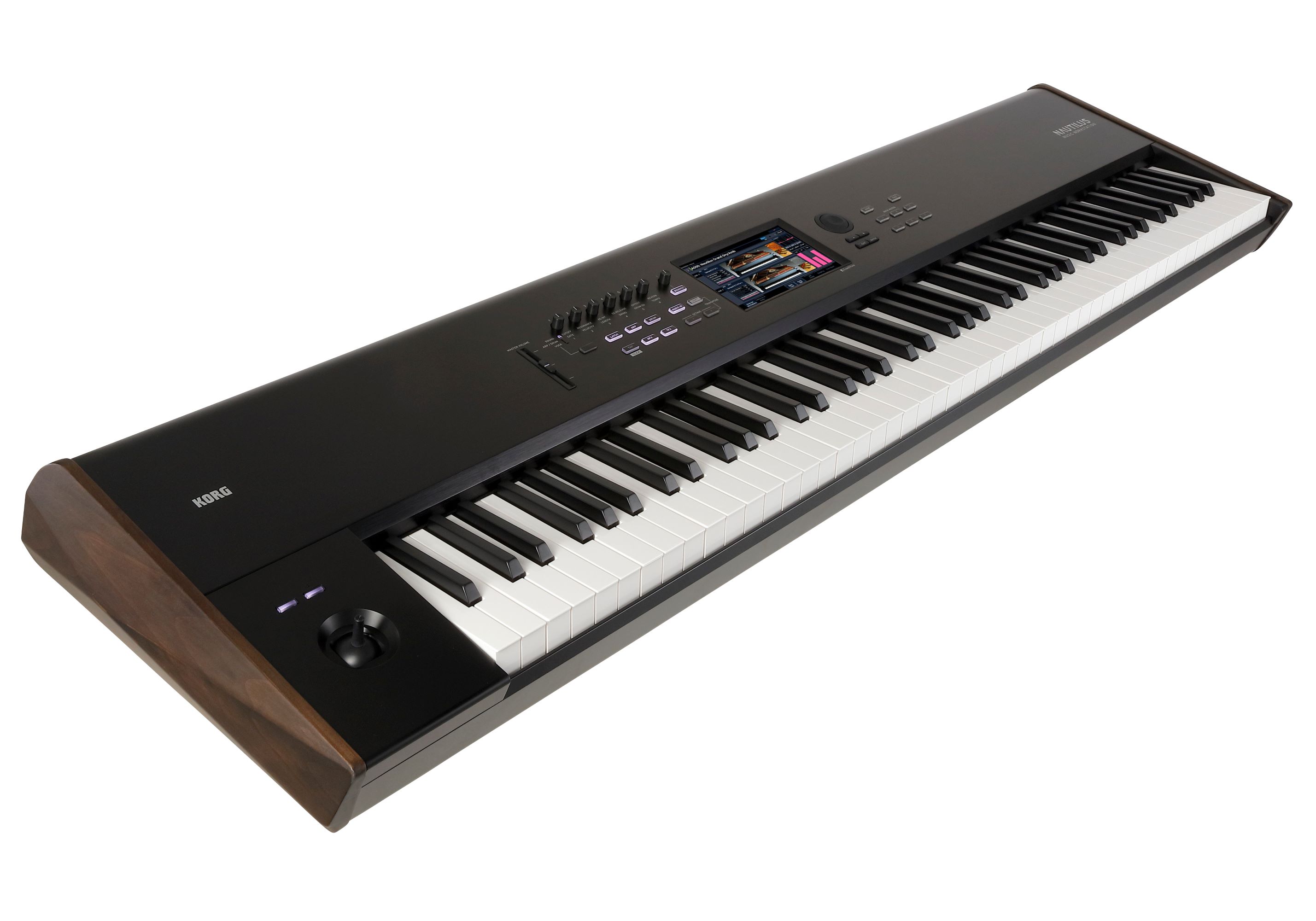Introduction
Welcome to the world of music and technology! The digital piano keyboard has revolutionized the way we create, practice, and enjoy music. Whether you are a seasoned pianist or a budding musician, the digital piano keyboard offers a myriad of benefits that cater to diverse musical needs.
In this article, we will delve into the intricacies of digital piano keyboards, exploring their functionality, features, and the stark differences between their acoustic counterparts. We will also uncover the advantages and disadvantages of digital piano keyboards, providing you with a comprehensive understanding of these innovative musical instruments.
The digital piano keyboard is not just a modern rendition of the traditional acoustic piano; it represents a fusion of cutting-edge technology and timeless musical artistry. Its versatility, portability, and advanced features have made it a popular choice for musicians, educators, and enthusiasts alike. Whether you are drawn to its seamless integration with digital audio workstations or its ability to replicate the rich, resonant tones of a grand piano, the digital piano keyboard offers a dynamic and immersive musical experience.
Join us on this exploration of the digital piano keyboard, as we uncover its inner workings, unique attributes, and the impact it has had on the world of music. Whether you are considering investing in a digital piano keyboard or simply seeking to expand your knowledge of musical instruments, this article will serve as a comprehensive guide, shedding light on the marvels of modern musical technology.
What is a Digital Piano Keyboard?
A digital piano keyboard is a versatile electronic musical instrument that replicates the sound and feel of a traditional acoustic piano while offering a wide range of additional features and capabilities. Unlike traditional pianos, which rely on strings and hammers to produce sound, digital piano keyboards utilize sampled sounds and electronic amplification to create a realistic and dynamic musical experience.
At its core, a digital piano keyboard consists of a set of keys, typically 88 in number, that are weighted to mimic the touch and response of an acoustic piano. These keys are sensitive to varying degrees of pressure, allowing for expressive playing and nuanced dynamics. Additionally, digital piano keyboards often feature built-in speakers, headphone jacks, and connectivity options for amplifiers and recording devices, making them versatile instruments for both personal practice and live performances.
One of the defining characteristics of a digital piano keyboard is its ability to emulate a wide range of instrumental sounds, including different piano tones, as well as other instruments such as strings, organs, and synthesizers. This versatility allows musicians to explore diverse musical styles and genres, making the digital piano keyboard a valuable tool for composition, arrangement, and performance.
Moreover, many digital piano keyboards incorporate advanced features such as touch-sensitive controls, recording and playback functions, and connectivity to external devices such as computers and tablets. These capabilities expand the creative possibilities for musicians, enabling them to experiment with sound manipulation, integrate with digital audio workstations, and access educational resources for learning and skill development.
Whether used in the confines of a home studio, on stage during a live concert, or as an educational tool in music schools, the digital piano keyboard has become an indispensable instrument for musicians of all levels. Its ability to blend the timeless essence of the piano with modern technology has solidified its place as a versatile and essential component of the contemporary musical landscape.
How Does a Digital Piano Keyboard Work?
A digital piano keyboard operates on a sophisticated system of electronic components that work in unison to replicate the sound and feel of a traditional acoustic piano. At the heart of its functionality is the use of sampled sounds, advanced sound processing, and responsive key mechanisms, all of which contribute to the instrument’s immersive musical experience.
When a key on a digital piano keyboard is pressed, it triggers a sensor that sends an electronic signal to the instrument’s internal processor. This signal corresponds to a specific sampled sound, such as a piano note, which is then reproduced through the instrument’s speakers or audio output. The keys themselves are designed to replicate the weighted and responsive touch of acoustic piano keys, providing a familiar playing experience for pianists.
Furthermore, digital piano keyboards often incorporate velocity-sensitive keys, meaning that the force with which a key is struck impacts the volume and timbre of the produced sound. This feature allows for expressive playing, enabling musicians to convey subtle nuances and dynamics in their performances, much like they would on an acoustic piano.
In addition to replicating piano sounds, digital piano keyboards can emulate a wide variety of other instruments through sample-based technology. This versatility allows musicians to access an extensive library of sounds, from classic grand piano tones to orchestral instruments, synthesizers, and beyond. The ability to switch between different sounds at the touch of a button expands the creative horizons for musicians, making the digital piano keyboard a versatile tool for composition and performance.
Moreover, many digital piano keyboards incorporate advanced sound processing algorithms to enhance the realism of the reproduced sounds. This includes features such as sympathetic resonance, key-off simulation, and damper pedal emulation, all of which contribute to a more authentic and immersive playing experience.
Overall, the seamless integration of electronic sensors, sampled sounds, and advanced signal processing enables digital piano keyboards to faithfully replicate the essence of an acoustic piano while offering a myriad of additional features and capabilities that cater to the evolving needs of musicians in the digital age.
Features of Digital Piano Keyboards
Digital piano keyboards are equipped with a diverse array of features that distinguish them from traditional acoustic pianos, offering musicians a wide range of capabilities and conveniences. These features cater to the needs of performers, composers, educators, and enthusiasts, providing a versatile and immersive musical experience.
One of the key features of digital piano keyboards is their ability to replicate a variety of instrument sounds, including different piano tones, electric pianos, organs, strings, and more. This versatility allows musicians to explore diverse musical genres and styles, making the instrument a valuable tool for creative expression and experimentation.
Many digital piano keyboards incorporate touch-sensitive keys, providing responsive feedback to the player’s touch and enabling expressive playing. The keys are often weighted to simulate the feel of acoustic piano keys, offering a familiar playing experience for pianists while accommodating nuanced dynamics and articulation.
Advanced digital piano keyboards often feature built-in metronomes, recording and playback functions, and connectivity options for external devices such as computers, tablets, and audio interfaces. These features facilitate practice, composition, and integration with digital audio workstations, empowering musicians to hone their skills and create high-quality recordings with ease.
Furthermore, digital piano keyboards frequently include features such as split and layer functions, allowing musicians to divide the keyboard into multiple zones with different sounds or layer multiple sounds together for rich, textured performances. This capability enhances the instrument’s versatility, enabling musicians to craft complex arrangements and orchestral textures with a single keyboard.
Additionally, many digital piano keyboards offer connectivity to educational apps and online resources, providing access to interactive lessons, sheet music libraries, and practice tools. This integration with digital learning platforms makes the instrument an invaluable tool for music education and skill development.
Some high-end digital piano keyboards incorporate advanced sound processing technologies, including sympathetic resonance, key-off simulation, and damper pedal emulation, to enhance the realism and expressiveness of the instrument’s sound. These features contribute to a more immersive and authentic playing experience, closely mirroring the characteristics of an acoustic piano.
Overall, the diverse features of digital piano keyboards cater to the evolving needs of modern musicians, offering a comprehensive set of tools and capabilities that empower creativity, skill development, and musical exploration.
Differences Between Digital Piano Keyboards and Acoustic Pianos
While digital piano keyboards and acoustic pianos share the fundamental purpose of producing musical notes through keyboard interaction, they differ significantly in their underlying technology, sound production, and overall functionality. Understanding these distinctions is essential for musicians and enthusiasts seeking to make informed choices about their preferred instrument.
One of the primary differences lies in the sound production mechanism. Acoustic pianos generate sound through the physical interaction of hammers striking strings, resulting in rich, resonant tones that are inherently organic and dynamic. In contrast, digital piano keyboards rely on sampled sounds and electronic amplification to reproduce piano tones, offering a more versatile and customizable sonic palette.
Another notable difference is the touch and feel of the keys. Acoustic piano keys are weighted and responsive, offering nuanced feedback to the player’s touch and enabling expressive playing. Digital piano keyboards strive to replicate this tactile experience through weighted and touch-sensitive keys, providing a familiar playing sensation while allowing for customization of key response and sensitivity.
Furthermore, acoustic pianos are inherently acoustic instruments, meaning their sound projection is reliant on the resonance of the piano body and strings. In contrast, digital piano keyboards incorporate built-in speakers and audio outputs, offering greater control over sound projection and enabling versatile connectivity to amplifiers, headphones, and recording devices.
One significant advantage of digital piano keyboards is their portability and space-saving design. Unlike acoustic pianos, which are large, heavy, and require regular tuning and maintenance, digital piano keyboards are compact, lightweight, and maintenance-free, making them ideal for musicians who require mobility and convenience without compromising on sound quality.
Moreover, digital piano keyboards often feature a wide range of additional sounds and features, such as built-in metronomes, recording and playback functions, and connectivity to external devices. These capabilities expand the creative possibilities for musicians, offering a comprehensive musical workstation within a single instrument.
While acoustic pianos hold an enduring charm and authenticity, digital piano keyboards provide a modern and adaptable alternative that caters to the diverse needs of contemporary musicians. Both instruments offer unique attributes and capabilities, and the choice between them ultimately depends on the individual preferences, musical goals, and practical considerations of the player.
Advantages of Digital Piano Keyboards
Digital piano keyboards offer a myriad of advantages that cater to the evolving needs and preferences of musicians, educators, and enthusiasts, making them a popular choice in the modern musical landscape. These advantages encompass a wide range of attributes, functionalities, and conveniences that set digital piano keyboards apart from their acoustic counterparts.
One of the primary advantages of digital piano keyboards is their versatility in sound production. Unlike acoustic pianos, which are limited to the inherent sound of strings and hammers, digital piano keyboards can replicate a diverse array of instrument sounds, including multiple piano tones, electric pianos, organs, strings, and synthesizers. This versatility allows musicians to explore various musical genres and styles, making the instrument a valuable tool for creative expression and experimentation.
Portability is another significant advantage of digital piano keyboards. Unlike acoustic pianos, which are large, heavy, and often immobile, digital piano keyboards are compact, lightweight, and easily transportable. This feature makes them ideal for musicians who require mobility and convenience without sacrificing sound quality, allowing for performances, rehearsals, and practice sessions in diverse settings.
Additionally, digital piano keyboards offer a range of advanced features and capabilities that enhance the musical experience. These features may include built-in metronomes, recording and playback functions, connectivity to external devices, and educational apps, providing comprehensive tools for practice, composition, and skill development within a single instrument.
Furthermore, digital piano keyboards require minimal maintenance compared to acoustic pianos. They do not require tuning, are less susceptible to environmental factors such as temperature and humidity, and are generally more resilient to wear and tear. This makes digital piano keyboards a practical and cost-effective choice for musicians seeking a reliable and low-maintenance instrument.
Another notable advantage of digital piano keyboards is their integration with digital audio workstations and recording setups. Many digital piano keyboards offer seamless connectivity to computers, tablets, and audio interfaces, allowing musicians to create high-quality recordings, integrate with music production software, and access a wealth of digital resources for learning and performance.
Overall, the advantages of digital piano keyboards encompass their versatility in sound production, portability, advanced features, low maintenance requirements, and seamless integration with digital technologies. These attributes make digital piano keyboards a compelling choice for musicians seeking a modern, adaptable, and immersive musical instrument.
Disadvantages of Digital Piano Keyboards
While digital piano keyboards offer a host of advantages, they also come with certain limitations and drawbacks that are important for musicians and enthusiasts to consider when evaluating their instrument choices. Understanding these disadvantages can provide valuable insights into the practicalities and nuances of using digital piano keyboards in various musical contexts.
One of the primary disadvantages of digital piano keyboards is the potential compromise in the tactile experience compared to acoustic pianos. While digital keyboards strive to replicate the weighted and responsive touch of acoustic piano keys, some musicians may find that the nuanced feedback and key response of acoustic pianos are not fully replicated, impacting the overall playing experience.
Furthermore, digital piano keyboards may be limited in their ability to produce the organic, resonant tones of acoustic pianos. While advancements in sound sampling and processing have significantly improved the realism of digital piano tones, some purists may argue that the inherent richness and depth of acoustic piano sound are not fully captured in digital reproductions.
Another notable disadvantage is the reliance on electronic components and amplification for sound projection. Unlike acoustic pianos, which naturally resonate and project sound through the piano body and strings, digital piano keyboards rely on built-in speakers or external amplification, which may not fully replicate the acoustic projection and resonance of traditional pianos in certain performance settings.
Portability, while an advantage, can also present a disadvantage in some cases. The compact and lightweight design of digital piano keyboards may result in a compromise in the overall stability and robustness compared to the solid construction of acoustic pianos. This can impact the tactile and physical interaction with the instrument, particularly during vigorous or expressive playing.
Moreover, digital piano keyboards may require regular power sources or battery replacements, making them reliant on electricity for operation. This dependency on power can limit the instrument’s usability in outdoor or off-grid settings, posing potential challenges for musicians who require consistent access to their instrument in diverse environments.
It is essential to consider the limitations of digital piano keyboards in the context of individual preferences, musical goals, and performance requirements. While they offer a wealth of advantages, understanding and mitigating their disadvantages can contribute to a well-informed and balanced approach to incorporating digital piano keyboards into musical practice and performance.
Conclusion
The world of music is enriched by the presence of digital piano keyboards, offering a harmonious blend of tradition and technology that resonates with musicians, educators, and enthusiasts worldwide. These innovative instruments have transcended the boundaries of conventional pianos, ushering in a new era of musical exploration, creativity, and accessibility.
Throughout this exploration, we have uncovered the intricate workings and unique attributes of digital piano keyboards, shedding light on their versatility, advanced features, and the compelling advantages they offer to musicians of all levels. From their ability to replicate a diverse range of instrument sounds to their portability, low maintenance requirements, and seamless integration with digital technologies, digital piano keyboards have emerged as indispensable tools for modern musicians.
However, it is essential to acknowledge the nuanced differences and potential limitations of digital piano keyboards, particularly in their tactile feedback, sound projection, and power dependencies. Understanding these aspects provides valuable insights into the practical considerations and trade-offs associated with choosing a digital piano keyboard as a musical instrument.
Ultimately, the choice between digital piano keyboards and acoustic pianos is a deeply personal and multifaceted decision, influenced by individual preferences, musical goals, and practical requirements. While digital piano keyboards offer a wealth of advantages, they also present certain trade-offs that must be carefully weighed against their benefits.
As technology continues to evolve, digital piano keyboards are poised to further enrich the musical landscape, offering innovative features, enhanced realism, and expanded creative possibilities for musicians. Their seamless integration with digital platforms and educational resources also positions them as valuable tools for music education and skill development.
Whether in the confines of a home studio, on stage during a live performance, or in the hands of aspiring musicians, digital piano keyboards have carved a distinct niche in the world of music, offering a modern, adaptable, and immersive musical experience that resonates with the spirit of innovation and artistic expression.







